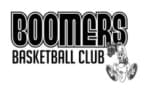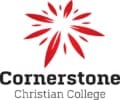BUSSELTON AMATEUR BASKETBALL ASSOCIATION HOT WEATHER POLICY
Busselton Amateur Basketball Association reminds all parties that they must act responsibly. A common-sense approach and consideration of the comfort and well-being of all individuals including participants and officials is encouraged.
High intensity exercise in a hot environment, with the associated elevation of body temperature, can lead to heat illness. Heat illness in sport presents as heat exhaustion or the more severe heat stroke.
Factors to consider before cancelling or modifying a sporting event or training (Remember not only to take players into account, but also umpires, officials and volunteers.)
| AMBIENT TEMPERATURE | RELATIVE HUMIDITY | RISK OF HEAT ILLNESS | POSSIBLE MANAGEMENT OF SUSTAINED PHYSICAL ACTIVITY |
| 15-20 degrees | Low | Heat illness can occur in distance running. Caution: over motivation | |
| 21-25 degrees | Exceeds 70% | Low – moderate | Increase vigilance. Caution: over motivation |
| 26 – 30 degrees | Exceeds 60% | Moderate | Moderate early pre-season training. Reduce intensity and duration of play/training. Take more breaks |
| 31- 35 degrees | Exceeds 50% | High – very high | Uncomfortable for most people. Limit intensity, take more breaks. Limit duration to less than 60 mins per session |
| 36 + degrees | Exceeds 30% | Extreme | Very stressful for most players. Postpone to a cooler part of the day/cancel |
DURATION AND INTENSITY OF THE GAME
- The combination of extreme environmental conditions and sustained vigorous exercise is particularly hazardous for players. The greater the intensity of the exercise, the greater the risk of heat related symptoms; e.g. distance running is more of a problem than stop-start team events
- Increased player and official rotation may also be considered
- Reducing playing time and extending rest periods with opportunities to rehydrate during the event would help safeguard the health of participants
- Provision of extra water for wetting face, clothes and hair is also important
- Fans to enhance air movement is beneficial
COMPETITION/TRAINING
(hydration and substitution opportunities)
- The Court Coordinator may consider dividing games into shorter playing periods and allow for extra breaks
- Encourage use of time outs
- Coaches may consider alternative training times and venues during hot weather
- Remember, even five minutes rest can cause a significant reduction in core temperatures
- It is important to consider the welfare of officials, as well as players
TIME OF DAY
- Fixturing will avoid the hottest part of the day (usually 11 am-3 pm)
Scheduling events outside this time is a consideration due to Basketball being a summer competition regardless of the temperature.
LOCAL ENVIRONMENT
- OUTDOOR GAMES: Radiant heat from surfaces such as black asphalt or concrete can exacerbate hot conditions
- OUTDOOR GAMES: The type of exercise surface and the amount of sunlight varies significantly between outdoor venues
- INDOOR GAMES: A hot indoor venue or an outside venue without shade is considered an unacceptable environment
- INDOOR GAMES: Airflow: Use of fans, open doors to allow through flow of air to avoid heat stress
CLOTHING
- Type of clothing is vital in minimising health risks associated with exercise in heat
Basketball is a summer sport. Clubs are encouraged to use fabrics that minimise heat storage and enhance sweat evaporation should be selected
ACCLIMATISATION OF THE PLAYERS
- Acclimatisation of the participant includes umpires, other officials and volunteers as well as players
- Preparation for exercise under hot conditions should include a period of acclimatisation (warm up) to those conditions
- Junior players acclimatise slower than adults
- Regular exercise in hot conditions will facilitate adaptation to help prevent performance deteriorating, or the athlete suffering from heat illness, during competitions
FITNESS LEVEL OF PLAYERS
Overweight and unconditioned athletes, umpires, officials and volunteers will generally also be susceptible to heat stress
AGE AND GENDER OF PLAYERS
- Female participants may suffer more during exercise in the heat because of their greater percentage of body fat
- Young children are especially at risk in the heat. Prior to puberty, the sweating mechanism, essential for effective cooling, is poorly developed. The ratio between weight and surface area in the child is also such that the body absorbs heat rapidly in hot conditions
- In practical terms, child athletes must be protected from over-exertion in hot climates, especially with intense or endurance exercise
- Although children can acclimatise to exercise in the heat, they take longer to do so than adults
- Coaches should be aware of this and limit training for non-acclimatised children during exposure to hot environments
On no account should children be forced to continue sport or exercise if they appear distressed or complain about feeling unwell
- Veteran participants may also cope less well with exercise in the heat. Reduced cardiac function is thought to be responsible for this effect
PREDISPOSED MEDICAL CONDITIONS
- It is important to know if athletes, umpires, officials or volunteers have a medical condition or are taking medication that may predispose them to heat illness
- Examples of illnesses that will put the participant or official at a high risk of heat illness include asthma, diabetes, pregnancy, heart conditions and epilepsy. Some medications and conditions may need special allowances
- Participants and officials who present with an illness such as a virus, flu or gastro or who are feeling unwell are at an extreme risk of heat illness if exercising in moderate to hot weather
- Participants or officials who may be affected by drugs or alcohol may be at an extreme risk of heat illness if exercising in moderate to hot weather
OTHER FACTORS FOR CONSIDERATION
- Preventative measures can be undertaken to minimise heat injuries. e.g. fans, drinking water, open doors to create through draught
- Ice must be readily available
- First Aid available at the Court Coordinator bench
- Court Coordinator or BABA Committee member with a First Aid Certificate
Heat stroke is potentially life threatening. Any indication of this condition should be immediately referred for medical assessment
DEHYDRATION
Dehydration is fluid loss which occurs during exercise, mainly due to perspiration and respiration. It makes an athlete more susceptible to fatigue and muscle cramps. Inadequate fluid replacement before, during and after exercise will lead to excessive dehydration and may lead to heat exhaustion and heat stroke.
HEAT EXHAUSTION
- Characterised by a high heart rate, dizziness, headache, loss of endurance/skill/confusion and nausea
- The skin may still be cool/sweating, but there will be signs of developing vasoconstriction (e.g. pale colour)
- The athlete may collapse on stopping activity
To avoid heat exhaustion, if people feel unwell during exercise, they should immediately cease activity and rest. Further benefit comes if the rest is in a shaded area with some passing breeze (from a fan if necessary) and the person takes extra hydration. Misting or spraying with water can also help.
HEAT STROKE
- Characteristics are similar to heat exhaustion but with a dry skin, confusion and collapse
- Heat stroke may arise in an athlete who has not been identified as suffering from heat exhaustion and has persisted in further activity
- This is a potentially fatal condition and must be treated immediately. It should be assumed that any collapsed athlete is at danger of heat stroke. The best first aid measures are “Strip/Soak/Fan”:
- strip off any excess clothing;
- soak with water;
- fan;
- ice should be placed inside clothes, against the skin as well as the groins and axillae
The aim is to reduce body temperature as quickly as possible. The athlete should immediately be referred for treatment by a medical professional. Important: heat exhaustion/stroke can still occur even in the presence of good hydration.
Please view the attached document, BABA Hot Weather Policy












